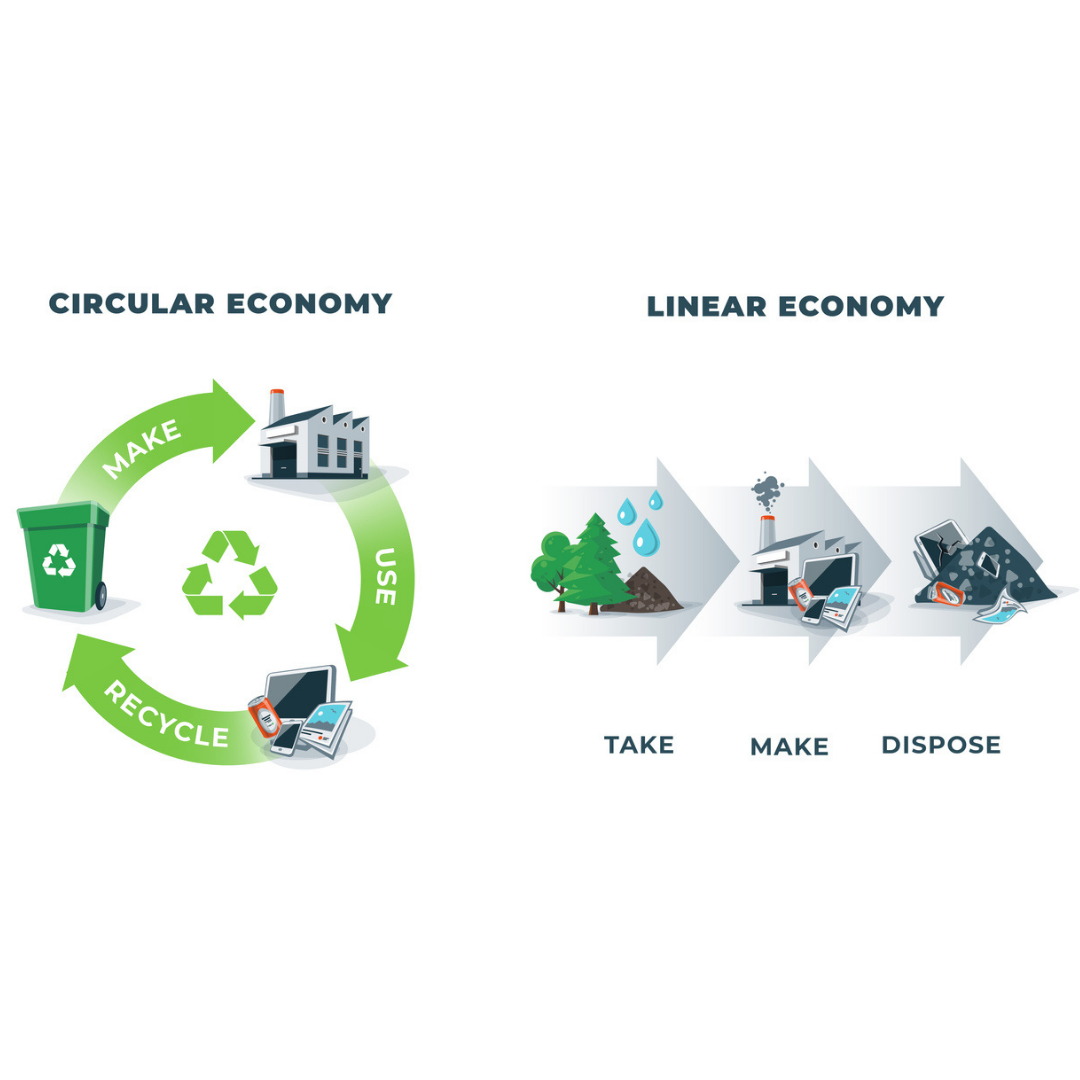Since the initial appearance of the term ‘circular economy’ in the late 1980s and its first application to describe an economic system around the valorisation of waste by David Pearce and Kerry Turner in 1990, the concept of the circular economy has become much more prominent than even most of its early proponents ever hoped. However, this popularisation of the idea also came with some important drawbacks. Circular economy has become a buzzword that many actors are nowadays claiming to be committed to, however it is not uncommon for actors to be doing so according to their own definitions of circularity, for the primary benefit of their public image, and thus, greenwashing is always a threat.
As of today, no single and finite definition of circular economy exists. We can, however, identify some basic principles behind the vision of the circular economy. Before that, the first fundamental thing to understand is that the circular economy is not another element of our (linear) economic system. Rather it is itself a “systems solution framework” and a holistic principle that applies to all ecosystems and industrial sectors.
According to the Ellen MacArthur Foundation – one of the most influential actors in the field of circular economy – we can furthermore identify three core principles: The first is to eliminate waste and pollution. An enormous amount of the resources that we extract and of the products that we create out of them end up in either landfills or become incinerated. An issue that starts long before the actual production of the goods because many products are destined to become waste due to the design decisions that went into them. Ideally, by changing our design decisions, we can eliminate waste.
The second principle is to circulate products and materials at their highest value. In the circular economy, goods are being shared and kept in use for as long as possible. Once a product is no longer of any use to us, it can either be (re)used by others, or when broken repaired. Should this fail, the product might be refurbished by the manufacturer and, ultimately, the materials recycled. In this way, the materials are not only kept in the value chain, but the value of the products maximised. Nevertheless, is should be noted that this circulation also has its limits due to the second law of thermodynamics. Still, the practices behind the circular economy are, without a doubt, a massive step towards a more sustainable world.
The third principle that the Ellen MacArthur Foundation names it to regenerate nature. Similarly, to the shift from a linear economy to the circular economy, a shift from extraction to regeneration needs to happen to make the circular economy a reality. By moving away from harmful farming to practices that actively build up natural capital, we are able to make important contributions to the preservation of biodiversity and to combat land loss through desertification and/or floodings. Regenerative farming practices furthermore produce less greenhouse gas emissions than conventional farming practices.
Together, these principles form the core of the circular economy.
